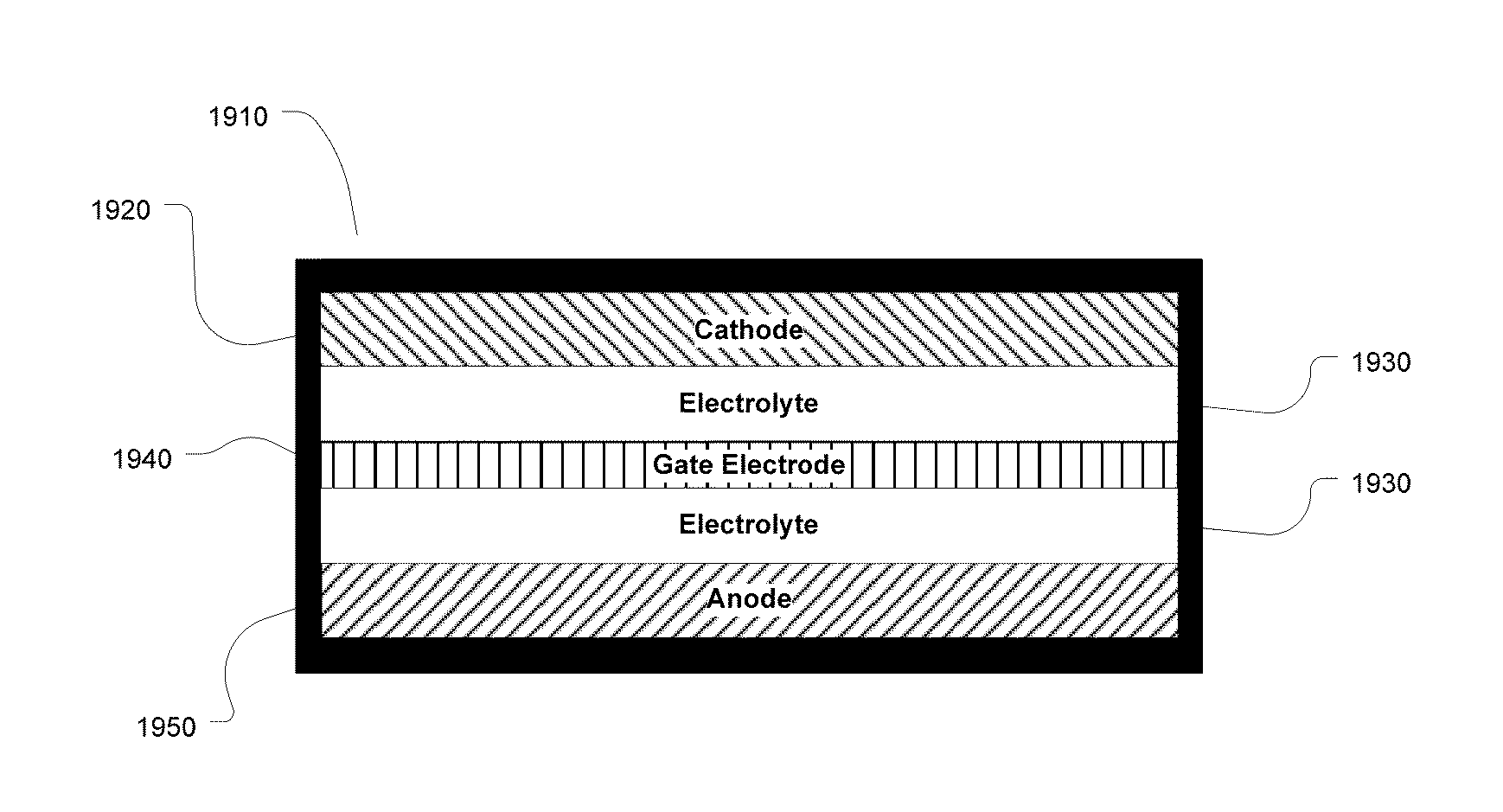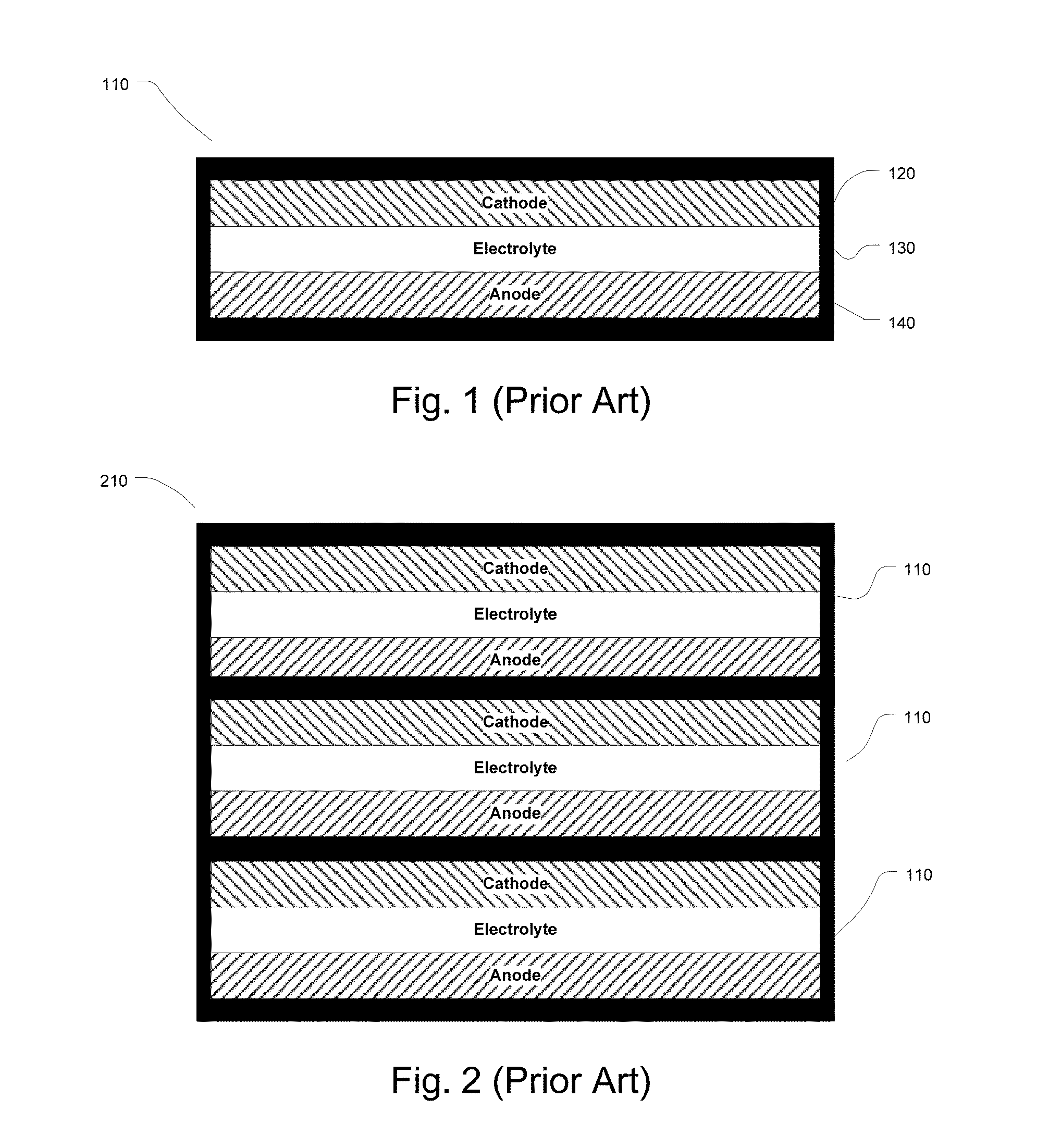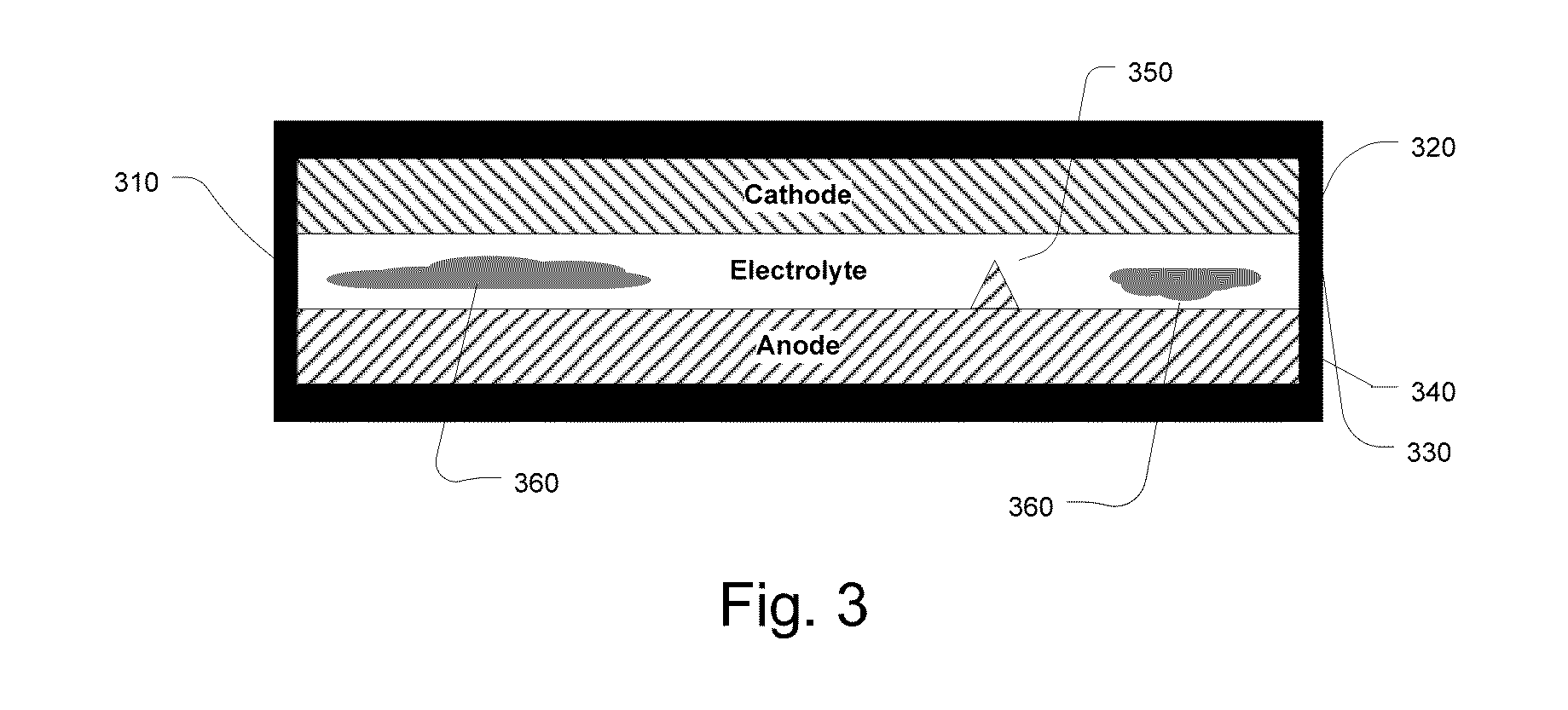During the charge /
discharge cycle, it occurs that the geometry of the working electrodes can evolve to the detriment of the
cell.
This short-circuit disables the
cell, and can also lead to a destructive
exothermic reaction with catastrophic results.
Another problem with conventional cells is that side reactions of the
electrolyte 330 can lead to the formation of excess
electrolyte interphase 360, called “mossy” deposits, within the interior volume of the
cell, which creates isolated deposits of
metal that is subsequently unable to participate in the operation of the cell.
To some extent, the problems of non-uniform morphological features and mossy deposits can be managed by limiting the conditions of
charge and discharge, but this limits the capacity and utility of the cell.
It has also been suggested that material improvements to electrode materials could minimize the formation of non-uniform morphological features, but such improvements would still leave a cell vulnerable to eventual failure with no means of detection prior to a catastrophic event, and no way to repair the cell.
Because no non-interfering way to detect incipient failures during normal operations is available for such cells, the only conclusive way to determine a cell failed due to dendritic shorting is the destructive disassembly of the cell during an autopsy.
Inactive electrodes cannot be used to address the problems associated with non-uniform morphological features or mossy deposits.
While providing mechanical advantages, this
assembly cannot be used to address problems such as non-uniform morphological features or mossy deposits.
Because of these properties, the
auxiliary electrode in Meissner cannot be used to address problems such non-uniform morphological features or mossy deposits.
The increased surface area improves the performance of the cell, but does not provide any
active control or measurement capability, and thus cannot be used to address problems such non-uniform morphological features or mossy deposits.
In Morris, these electrodes do not cover the entire plane of the cell, and thus cannot provide a uniform
active surface.
The extended electrode cannot be used to address problems such as such non-uniform morphological features or mossy deposits.
While the scheme of Morris provides mechanical advantages, the extended electrodes are electrically equivalent to the working electrodes and cannot be used to address problems such as such non-uniform morphological features or mossy deposits.
While this approach can address the degradation in performance is identified by either “capacity fade” or “power fade” due to the effective loss of working ions, Christensen's reservoir cannot be used to address problems such non-uniform morphological features or mossy deposits for several reasons.
First, the reservoir doesn't participate in the normal
charge and discharge cycle, and is thus not able to monitor the state of non-uniform morphological features.
Second, the reservoir is not located between the working electrodes forming a complete separator, so the cell could not be fully protected by any mechanical function the reservoir provided.
This
Lithium management function does not address problems such as such non-uniform morphological features or mossy deposits.
Because it is directly electrically connected to one or other
working electrode, the additional electrode is not electrically distinct from the working electrodes, and cannot be used address problems such as such non-uniform morphological features or mossy deposits.
However, the sensing electrodes do not participate in the
energy storage or release
chemistry of the battery, and cannot be used address problems such as such non-uniform morphological features or mossy deposits.
Because of the three dimensional nature of the electrodes, the distance between the
auxiliary electrode and the relevant
working electrode varies substantially, limiting the utility of the
auxiliary electrode only to functions unconcerned with local geometric evolution of the relevant working electrode.
Therefore, the auxiliary electrode cannot be used to manage local phenomena that occur between the working electrodes, and cannot be used to manage phenomenon related to non-uniform morphological features.
The three dimensional cell of Ramasubramanian cannot be used to address problems such non-uniform morphological features or mossy deposits.
The device is not configured to allow bias to be applied to the third electrode during operation of the cell.
Because it is passive, the Cui invention like the Noguchi device may serve to reject defective cells but does not provide any improvement to the operation of the cell.
In summary, the use of more than two electrodes in electrochemical cells for a variety of uses is well known, but none of these prior uses can strip non-uniform morphological features or actively manage the health of the working electrodes.
However it does not provide any description of a cell comprising a separate third electrode, or a cell wherein three separate electrical signals between pairs of electrodes (i.e., between the positive and negative electrodes, between the positive
and gate electrodes, or between the negative
and gate electrodes) can be recognized, and modified or controlled.
If the gate shifts to the
anode potential there is no longer a guaranteed metal-
free zone within the cell, and the cell is at risk for shorting.
The structure of the gate, while porous, needs to have a sufficiently fine pore structure so that a non-uniform morphological feature passing through the structure has a very
high probability of making electrical contact.
These pores are sufficiently small that it is highly improbable that a non-uniform morphological feature could pass through the mesh without making physical contact with the material.
However, as supplied, the commercial separator material is not useful for protecting the cell from the previously mentioned failure and degradation
modes, because the impedance of the separator is effectively infinite, so that in the event that a non-uniform morphological feature contacts such a gate, the local gate potential would move to the plating potential and the non-uniform morphological feature would continue to grow.
However in some non-limiting embodiments, this metalized mesh has insufficient conductance to achieve the goals of the present disclosure because the mesh is not conductive enough.
Consequently the grid alone may be insufficient to achieve the goals of the present disclosure.
 Login to View More
Login to View More  Login to View More
Login to View More 









